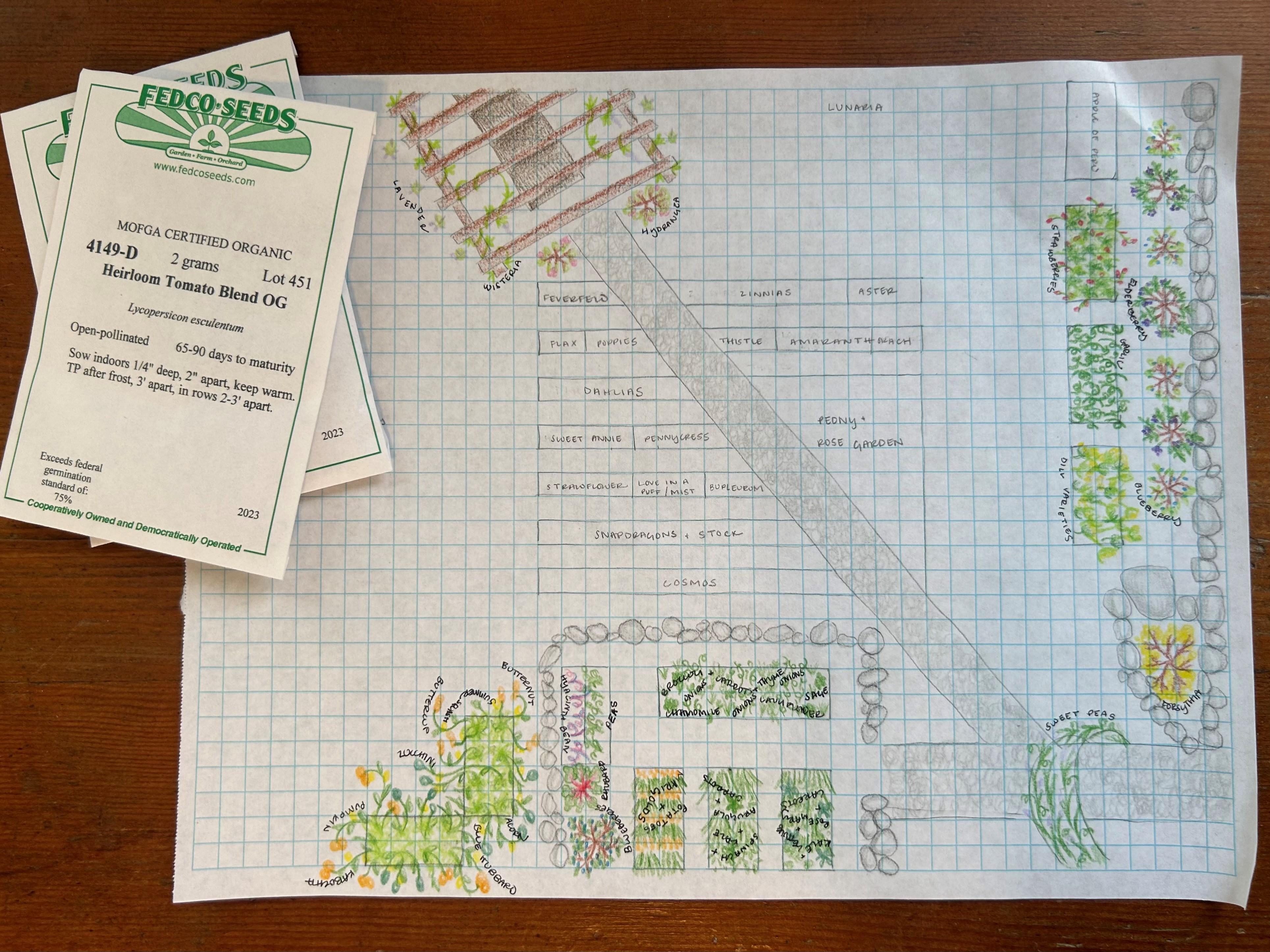
- HOME
- ABOUT US
- WHAT WE DO
- SUBSTANCE
USE PREVENTION - NUTRITION
EDUCATION - HEALTHY FOODS
FOR THE COMMUNITY
- SUBSTANCE
- HOW WE CAN HELP
- NEWS & EVENTS
- GET INVOLVED
Blog
March 06, 2023
Bringing Food Home

I cannot help but be excited post snowstorm. Though we may have fallen victim (depending on how you view snow) to another 10 inches this past week, I still smell spring. I am an earl(ier) riser. Every morning I like to take a few moments of peace before the day gets crazy and these past few weeks I have been greeted to a much more obvious and earlier sunrise. When I step out my door I can now hear cardinals singing. And when I drive down my long, dirt road, I am welcomed with a lot of sloshing, loose mud. All good signs because it means spring is near.
I figure there is no better way to celebrate this win than to start talking about garden planning! While it is still early for us all to be setting up our grow lights and seedling trays, it is never too early to start planning out our gardens to make the most of our seeds. Below I have listed a few tips I have gathered to get you started (if you have not already)!
1. Take some time to review open seed packets. If you have a stash hidden in the house, the first step to planning your 2023 garden is to see what you have left over and if they are still viable! If you are unsure, you can do the water test: the seeds that sink are ready to be sprouted and those that float will not germinate. We made a video about this last year on the Healthy Lincoln County Facebook page- check it out!
2. Draw out your ideas. Whether you have existing beds that you plan to use again or have a new space you plan to work with, map out your proposed area. I like to plan my gardens using the square foot gardening method. This way I can make the most of my space and calculate how many carrots, for example, I can fit in my beds! You may also want to consider companion planting. This is when you place certain vegetables, fruits, and herbs next to one another to detract pests, potentially increase pollination, and perhaps get a better yield!
3. Based on your drawing and your existing seed collection, now it is time to purchase some new seeds. By completing these first two steps you will likely waste less and truly only order what you need. Have fun though! Newer gardeners may want to stick to the five-veggie rule (where you focus on growing just five different vegetables total in your first year) and more experienced gardeners may want to make it a goal to try out a new variety!
4. This might also be a good time to mention that you should probably test your soil when the soil is workable. This just ensures you can amend your soil in time before you are ready to put your seedlings in the ground. I could write pages and pages about soil health and its importance!
5. Of course, the next step is to start your seeds! I always recommend the Maine Organic Farmers and Gardeners Association (MOFGA) calendar to start seeds inside.
Here are some resources to get you started:
•Seed starting calendar: https://www.mofga.org/resources/gardening/seed-planting-calendar/
•Companion planting: https://www.farmersalmanac.com/companion-planting-guide
•Square foot gardening method: https://squarefootgardening.org/
Happy spring, and happy planning, to you all!
 MCD Global Health
MCD Global Health